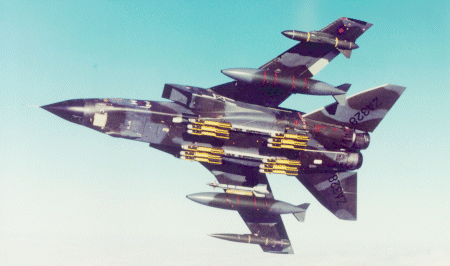Stewart Penney/PARIS
The USA is offering the UK the opportunity to join the US Army's common modular missile (CMM) development programme for a next generation anti-tank weapon. Meanwhile, Lockheed Martin is close to completing the certification programme for an anti-ship version of the Hellfire missile and Alenia Marconi Systems is completing further trials of its Hellfire-derived Brimstone.
CMM will replace TOW and Hellfire on ground and helicopter platforms by the end of the decade. The weapon will probably be equipped with a multimode seeker combining millimetre wave (MMW) radar, infrared and laser sensors. The US Government is believed to have made its offer to London earlier this month. The UK Ministry of Defence confirms that its talking about a possible participation, but says it is unlikely to make a decision before early next year. Any financial involvement would be "minimal" it says.
Neil Hayward, Lockheed Martin Missiles and Fire Control director international programme development, says concerns that CMM will be a fire-and-forget version of TOW - a wire-guided missile targeted by an operator using a joystick - are receding.
Lockheed Martin has a company-funded imaging infrared seeker programme for Hellfire which could find application on CMM while technologies developed for the Northrop Grumman Longbow radar for the Boeing Sikorsky RAH-66 Comanche could be fed in to the MMW Hellfire seeker.
Cliff Waldwyn, AMS business development manager, dynamics, says Brimstone technology and the company's planned multimode seeker - adding laser guidance to Brimstone's MMW radar - could be applied to CMM. The company could extend its links with Boeing - the Hellfire prime contractor and AMS's Brimstone partner - to participate in the programme.
Lockheed Martin is meanwhile completing certification of the anti-ship-optimised AGM-114M, a semi-active laser-guided Hellfire with a blast-fragmentation warhead. Testing completion is due in August with deliveries to the Turkish navy, the launch customer, set for later this year, says Hayward.
Although developed from Hellfire, Brimstone is significantly different, with an MMW radar seeker and systems changes to allow use from fast jets.
Waldwyn says the company is looking at options for the missile allowing it to target aircraft on the ground, small naval vessels, radars and missile launch vehicles.
AMS is also considering mounting the missile on vehicles, helicopters and tripods for coastal defence as well as the Joint Strike Fighter's inertial weapons bay.

A sixth Brimstone guided test firing was set for late June while a further boosted, non-guided firing from a Panavia Tornado is expected shortly. Brimstone is due to enter service in October 2001.
Source: Flight International























